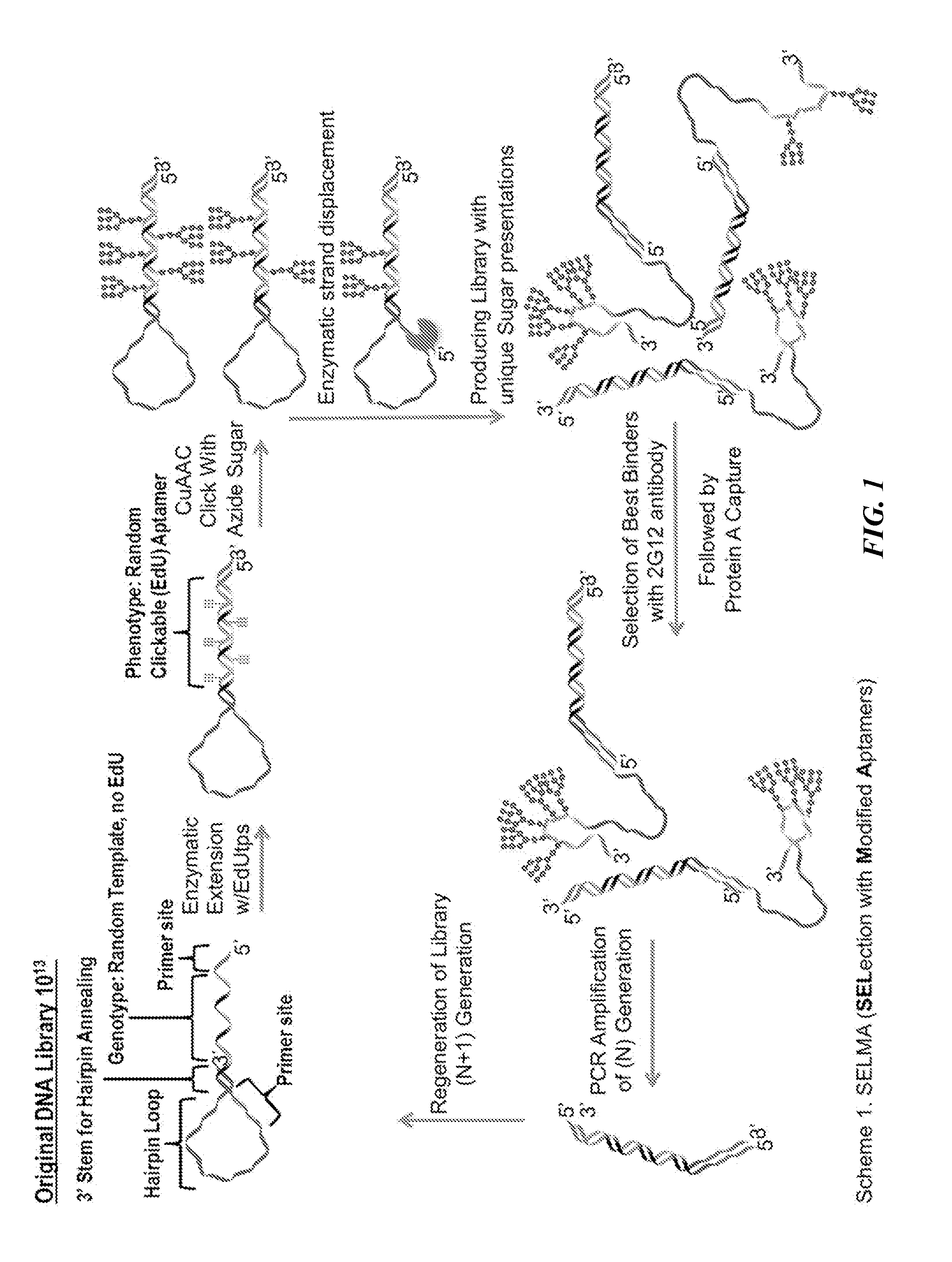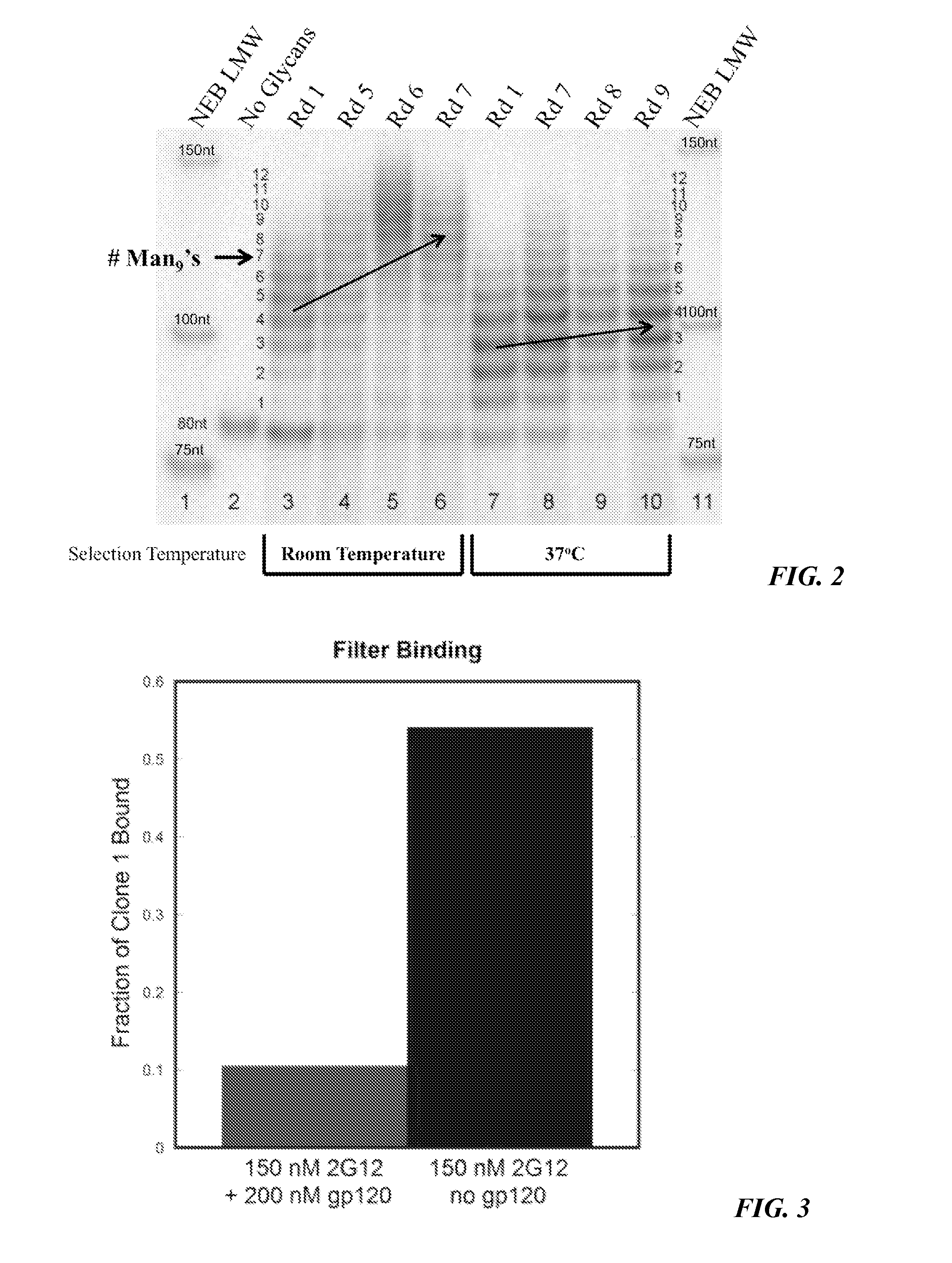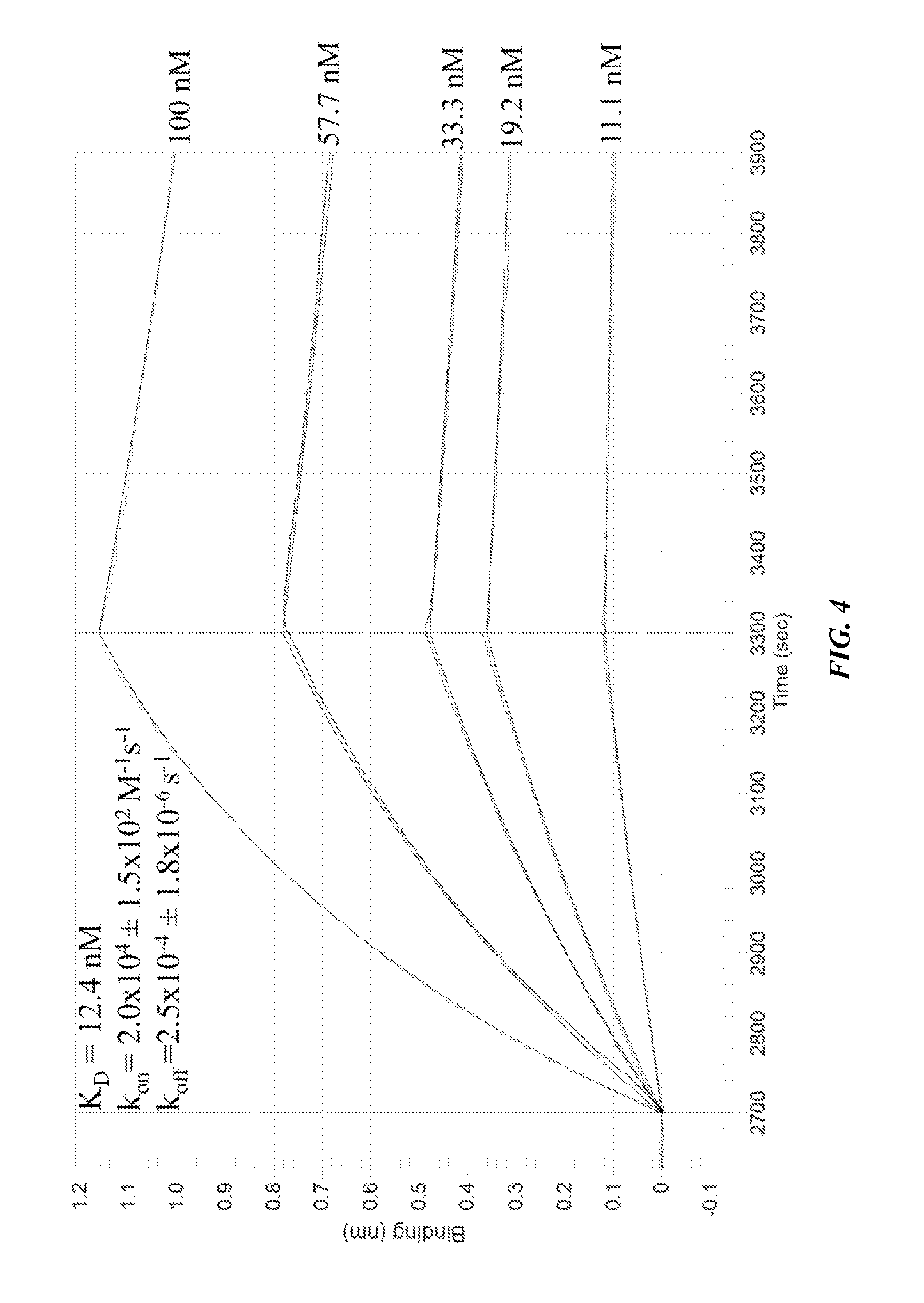High temperature selection of nucleotide-supported carbohydrate vaccines and resulting glycosylated oligonucleotides
- Summary
- Abstract
- Description
- Claims
- Application Information
AI Technical Summary
Benefits of technology
Problems solved by technology
Method used
Image
Examples
example 1
Overview of SELMA
[0164]Immunogens with optimized clustering of carbohydrates for more faithful mimicry of the 2G12 epitope have been developed by using the antibody to recognize and select the best gp120 mimics from among a very diverse library. To achieve this, a new selection method, termed SELMA (SELection with Modified Aptamers, FIG. 1) has been developed, which uses diverse DNA backbones to cluster the glycans in various ways (MacPherson et al., Angew. Chem. Int. Ed. 50:11238-11242 (2011); Temme et al., J. Chem.—Eur. J., manuscript accepted (DOI: 10.1002 / chem.201303848), which are hereby incorporated by reference in their entirety). The library is constructed using copper assisted alkyne / azide cycloaddition (CuAAAC) chemistry (Kolb et al., Angew. Chem. Int. Ed. 40:2004-2021 (2001); Rostovtsev et al., Angew. Chem. Int. Ed. 41:2596-2599 (2002); Gierlich et al., Org. Lett. 8:3639-3642 (2006); Gierlich et al., Chem. Eur. J. 13:9486-9494 (2007), which are hereby incorporated in thei...
example 2
Trends in Multivalency During Selections at Room Temperature and 37° C.
[0165]In the current study, the effect of running the selection step (binding to 2G12) at 37° C. rather than room temperature was examined, and it was found that the higher temperature led to dramatically improved results. FIG. 2 shows the changing library multivalency profile throughout two selections carried out with the same starting library of ˜1013 sequences, one at room temperature and the other at 37° C. In the room temperature selection (lanes 3-6), one could see a trend toward increased bands of high MW as the selection progressed (orange arrow), indicating increased multivalency. By contrast, the selection at 37° C. (lanes 7-10) resulted in very little increase in glycosylation.
[0166]After 7-9 rounds of selection, sequences of individual clones were obtained and it was found that the 37° C. library had mostly converged on a single highly-related family (Table 1, entries 1-13). Confirming what was observ...
example 3
Gp120 and Clone 1 Compete for Binding to 2G12
[0167]Several additional experiments were run to further delineate the binding interaction of selected clones with 2G12. A competition study (FIG. 3) showed that the interaction presence of 200 nM gp120JR-FL, suggesting that binding to 2G12 occurs in its gp120 binding site. The glycan dependence of 2G12 recognition was also examined. No binding was observed for clone 1 when glycans were not attached (FIG. 9), indicating that the nucleic acid component alone was not responsible for the binding. Deletion of any of the three glycans by replacing an alkynyl base with cytosine (EdU→C) resulted in complete loss of binding (Table 13, M1-3(C)). To rule out the possibility that this loss of binding might be due to a change in pairing of the underlying base, EdU→T mutants were prepared (Table 13, M1-3(T)). Again, none of the three mutants showed any binding to 2G13, further supporting the importance of all three glycans for 2G12 recognition.
TABLE 1...
PUM
| Property | Measurement | Unit |
|---|---|---|
| Temperature | aaaaa | aaaaa |
| Temperature | aaaaa | aaaaa |
| Temperature | aaaaa | aaaaa |
Abstract
Description
Claims
Application Information
 Login to View More
Login to View More - Generate Ideas
- Intellectual Property
- Life Sciences
- Materials
- Tech Scout
- Unparalleled Data Quality
- Higher Quality Content
- 60% Fewer Hallucinations
Browse by: Latest US Patents, China's latest patents, Technical Efficacy Thesaurus, Application Domain, Technology Topic, Popular Technical Reports.
© 2025 PatSnap. All rights reserved.Legal|Privacy policy|Modern Slavery Act Transparency Statement|Sitemap|About US| Contact US: help@patsnap.com



